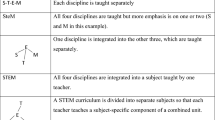Abstract
The Israeli academic preparatory programs (APPs) challenge the sorting regime of regular education by offering a genuine second chance for higher education to youngsters who have failed to acquire the necessary prerequisites via the mainstream. The study analyzes the success of the APPs to produce changes in their students in light of the failure of a different second-chance framework, the community college, to do so. The analysis of a sample of APP graduates indicates that background characteristics and high school history, powerful sources of differentiation upon admittance to the APPs, lose their discriminating power after graduation. All graduates join any postsecondary educational framework, regardless of their initial disadvantages. The success of the APPs in eliminating initial gaps among the students is assigned mainly to their nonconformity to the selection criteria of regular education. The purpose of this research was to assess whether second-chance educational programs that challenge the sorting criteria of the mainstream succeed in enhancing social equality in education. Outcomes of the “challenging” second-chance academic preparatory programs in Israel are analyzed in light of the reported failure of community colleges to moderate inequalities in higher education.
Similar content being viewed by others
References
Agresti, A. (1990).Categorical Data Analysis. New York: John Wiley & Sons.
Ayalon, H. (1991). School track and gender differences in occupational aspirations: Economic aspects. In A. Yogev (ed.),International Perspectives on Education and Society, vol. 2. Greenwich, CT: JAI Press.
Bishop, Y. M. M., Feinberg, S. E., and Holland, P. W. (1975).Discrete Multivariate Analysis. Cambridge, MA: MIT Press.
Brint, S., and Karabel, J. (1989).The Diverted Dream: Community Colleges and the Promise of Educational Opportunity in America, 1900–1985. New York: Oxford University Press.
Clark, B. (1960). The “cooling out” function in higher education.American Journal of Sociology 65: 659–676.
Dougherty, K. (1987). The effects of community colleges: Aid or hindrance to socioeconomic attainment?Sociology of Education 60 (2): 86–103.
Hartman, M. (1979). Prestige grading of occupations with sociologists as judges.Quality and Quantity 13: 1–19.
Inbar, D. E., and Sever, R. (1986). Second chance: Some theoretical and empirical remarks.Issues in Education 4 (2): 121–135.
Karabel, J. (1986). Community colleges and social stratification in the 1980s. In L. S. Swerling (ed.),The Community College and Its Critics pp. 13–30. San Francisco: Jossey-Bass.
Kfir, D. (1988). Achievement and aspirations among boys and girls in high school: A comparison of two Israeli ethnic groups.American Educational Research Journal 25: 213–236.
Kfir, D., Ayalon, H., and Shapira, R. (1989). Israel. In G. Kelly (ed.),International Handbook on Women's Education pp. 473–489. Westport, CT: Greenwood Press.
Lee, V. E., and Frank, K. A. (1990). Students' characteristics that facilitate the transfer from two-year to four-year colleges.Sociology of Education 63: 178–193.
Mare, R. D. (1980). Social background and school continuation decisions.Journal of American Statistical Association 75: 295–305.
Nora, A., and Randon, L. I. (1990). Determinants of predisposition to transfer among community college students: A structural model.Research in Higher Education 34 (3): 235–255.
Pincus, F. L. (1980). The false promises of community colleges: Class conflict and vocational education.Harvard Education Review 50 (3): 332–361.
Shavit, Y. (1984). Curricular tracking and ethnicity.American Sociological Review 49 (2): 210–220.
Yogev, A. (1981). Determinants of early educational career: Further evidence of the sponsorship thesis.Sociology of Education 54: 181–195.
Yogev, A., and Ayalon, H. (1991). Learning to labor or laboring to learn? Curricular stratification in the Israeli vocational high schools.International Journal of Educational Development 11 (3): 209–219.
Yogev, A., and Shapira, R. (1987). Ethnicity, meritocracy and credentialism in Israel: Elaborating the credential society thesis. In R. V. Robinson (ed.),Research in Social Stratification and Mobility, vol. 6, pp. 187–212. Greenwich, CT: JAI Press.
Yuchtman-Yaar, E. (1985). Differences in ethnic patterns of socioeconomic achievement in Israel—A neglected aspect of structural inequality.International Review of Modern Sociology 15: 99–116.
Author information
Authors and Affiliations
Rights and permissions
About this article
Cite this article
Ayalon, H., Shapira, R. & Shavit, R. A second chance for higher education: Academic preparatory programs in Israel. Res High Educ 33, 497–510 (1992). https://doi.org/10.1007/BF00973769
Received:
Issue Date:
DOI: https://doi.org/10.1007/BF00973769




